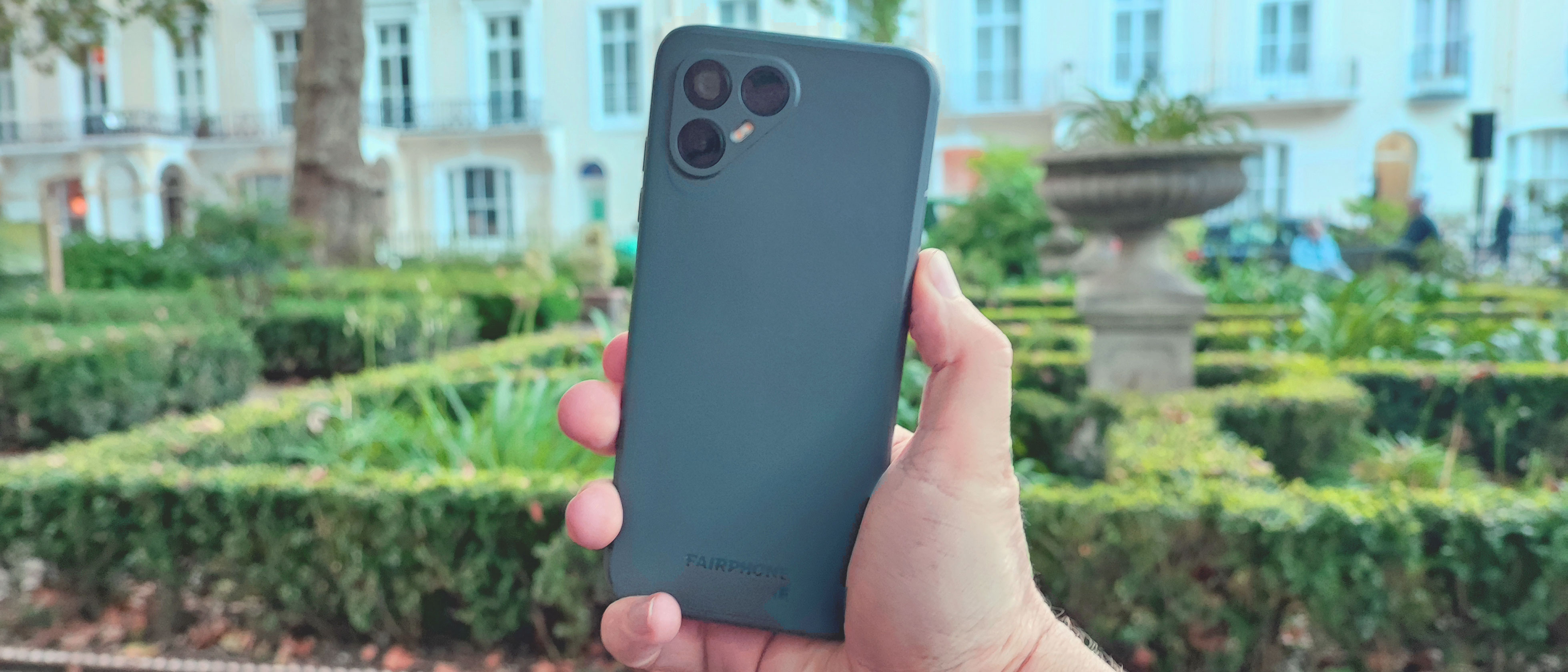TechRadar Verdict
The Fairphone 4’s eco-friendly resume is reason enough for many people to buy it, but beyond that it’s a strong mid-range phone in all but a few categories. Its battery life is particularly impressive, and its hardy body is protected against bumps and drops, but the cameras leave a lot to be desired.
Pros
- +
Made from green materials
- +
Has a durable body
- +
Great battery life
Cons
- -
Iffy camera performance
- -
Fingerprint sensor is temperamental
- -
No 3.5mm headphone jack
Why you can trust TechRadar
Two-minute review
If you’re looking for the most eco-friendly phone of 2021, the Fairphone 4 is far and away the best option for you - it’s the newest smartphone from Fairphone, a company that specializes in tech made from eco-friendly material sourced in sustainable ways and built in factories that treat employees well.
We normally see one new Fairphone device a year, and the Fairphone 4 is 2021’s entry, but it’s the first ‘new’ device from the company since the Fairphone 3 in 2019. We say that because 2020’s Fairphone 3 Plus was actually just an upgraded version of the 3 - and we don’t say that flippantly, as you could literally replace the parts in your 3 to turn it into a 3 Plus.
Fairphones are modular, which means you can easily remove and replace the components yourself if one gets damaged or you want an upgrade. This is great for the user, as it means you don’t have to pay someone to repair your device, and it stops you needing to replace your smartphone if one small part plays up.
The modular nature of the phones is just one of many ways in which they’re eco-friendly. Lots of the body is recycled, particularly the removable rear which is made from 100% recycled plastics. What parts Fairphone does need to mine from the ground, it does so from sustainable sources, while making sure workers are treated fairly and are paid well. This applies to factory workers making the devices too.
In short, this is the perfect phone for someone who cares about the environment, as Fairphone laps other tech brands in how green it is, and that target audience has already probably stopped reading to find out where they can buy one of these things. But beyond its green facade, the Fairphone 4 is a competitively-priced and capable smartphone that impressed us.
For a device with a relatively small power pack, the Fairphone 4 had a surprisingly long battery life, reliably seeing us through a day of use and often seeing in the next afternoon with ease. Talking of reliability, we found its sturdy metal frame and plastic rear ensured the phone could take a beating (or a drop, or many drops) without even taking a scratch.
With a fairly capable mid-range chipset, the Fairphone 4 felt snappy to use and handled games just fine - likewise the display looked good and the stock Android software is clean and easy to use, as most people would want from their phone.
Sign up for breaking news, reviews, opinion, top tech deals, and more.
So the Fairphone 4 is a strong all-rounder; if it has one issue, it’s that it doesn’t stand out spec-wise in any particular department, which may put off people who follow the competitive mid-range phone market (as almost every phone there has at least one super-strong suit).

In particular the cameras leave a lot to be desired - pictures looked fine, but we often had to pull them over to a photo editing app to really make them look good, while many native camera apps will do the same thing as soon as you take a picture.
On the topic of issues, we found the fingerprint scanner on the side of the phone sometimes struggled to pick up our finger, leading to a few awkward raise-thumb-lower-thumb-and-repeat moments when we wanted to unlock the thing. Some may also find the lack of a 3.5mm headphone jack, something previous Fairphones had, a deal-breaker, though with the way the phone industry is going you’ll struggle to find alternatives.
The Fairphone 4 has a mid-range price and its specs all fall in line with what you’d expect from a phone at this cost. None of the specs particularly stand out, but they don’t need to, as the unique selling point is in the name: it’s a fair phone, and for some, that’s enough in itself.
Fairphone 4 price and availability
Fairphone only sells its smartphones in Europe for now, so if you live elsewhere, don’t expect to be buying this thing anytime soon.
In the UK, the device costs £499 (around $670, AU$930) for 6GB of RAM and 128GB of storage, and you can bump that up to 8GB / 256GB for £569 (about $770, AU$1,060). If you’re not sure how much storage you need, it’s worth considering that both models have a microSD card slot for up to 2TB of extra room.
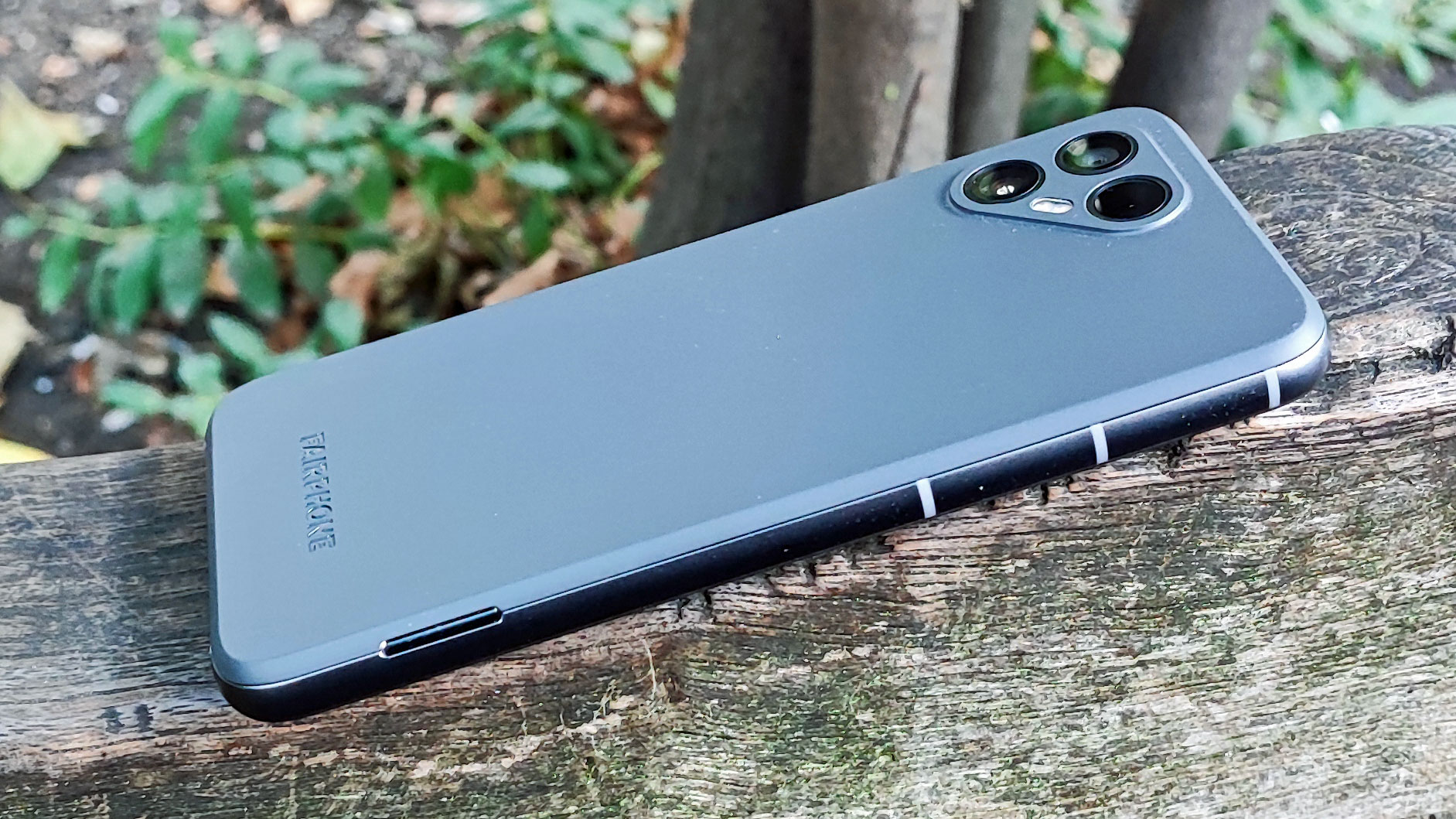
Design
If we were to compare the Fairphone 4 to other devices, it’d be to members of the ‘rugged’ niche - these are hardy devices designed to withstand bumps and knocks, useful for workers in certain fields or adventurous types.
The phone’s rear is made from 100% recycled plastics, and it feels tough yet is easily grippable. There’s also a metal frame and these two factors combine to give the device a hardy feel, something which the phone’s specs back up, as it’s IP54-rated against splashes and dust, and also has the MIL-STD-810G certification against environmental and climate hazards, which is something we typically only see on rugged devices.
Measuring 162 x 75.5 x 10.5mm, the Fairphone 4 is pretty thick, and it’s a little on the heavy side too at 225g. However we found it fairly comfortable to use one-handed.
The phone has a USB-C port but no 3.5mm headphone jack, unlike previous handsets from the company, so fans of wired audio will have to use a USB-C adapter to keep using their chosen cans.
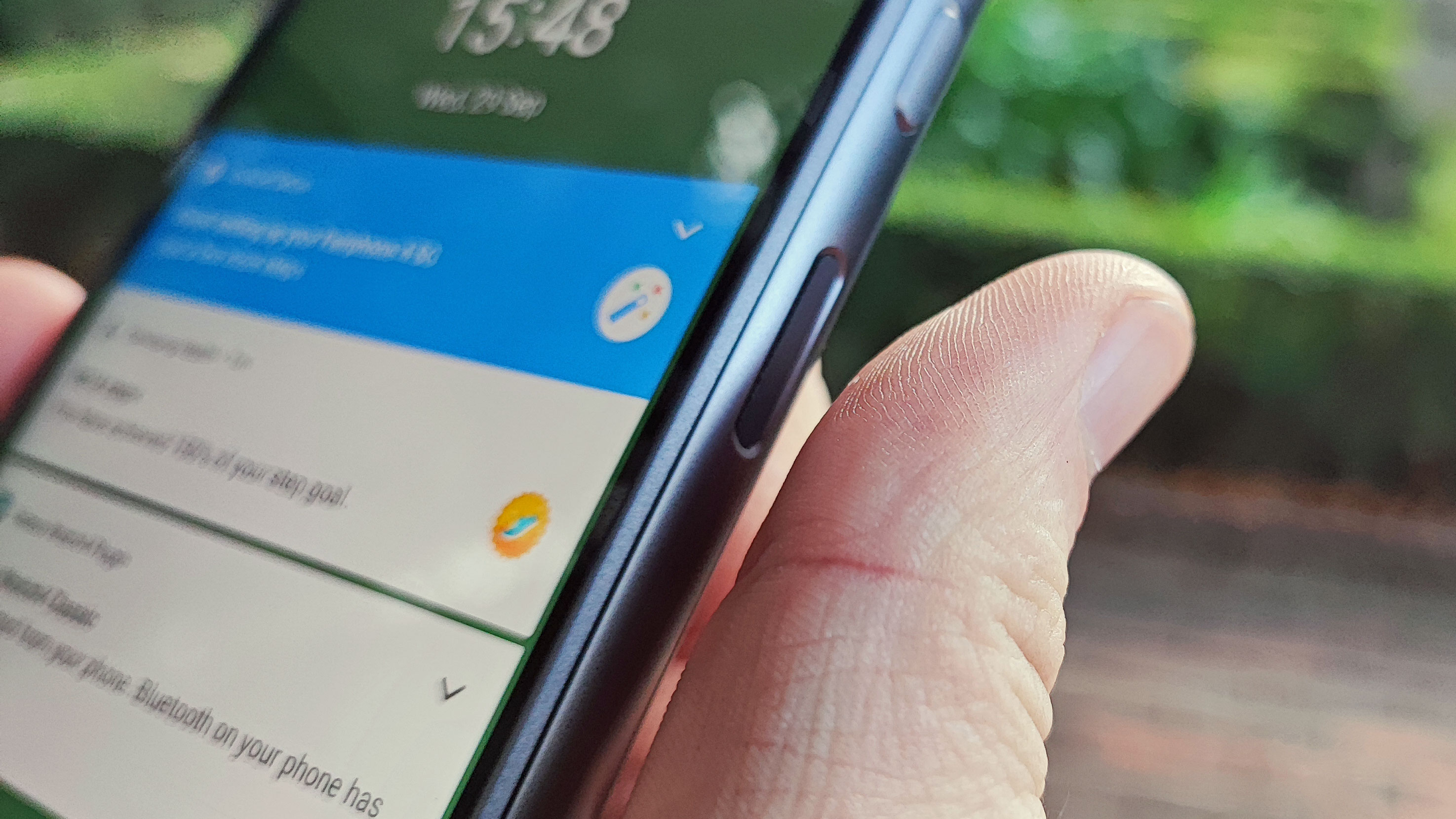
On the right edge of the phone there’s a fingerprint scanner embedded in the power button - this didn’t always pick up our touch straight away, and we sometimes found it a little fiddly to use, though we’ve seen worse. Above this is the volume rocker.
On the back, there are two rear cameras arranged in a triangle, along with a sensor. Likely due to this layout, our test unit was confused with an iPhone multiple times during our testing.
The Fairphone 4 (as well as its predecessors) is a modular phone – this means you can take off the back of the device, remove the battery, and use a screwdriver to replace parts like the rear camera, display and audio module.
Not only does this modularity enable you to replace damaged parts (which you can do yourself, just by ordering spares from Fairphone’s website), it also lets you upgrade your handset if and when the company releases a Fairphone 4 Plus. We saw this with the Fairphone 3 Plus, which had the same body as the Fairphone 3 but with improved specs – if you had the non-Plus device you could simply buy a few parts to upgrade to the Plus yourself.
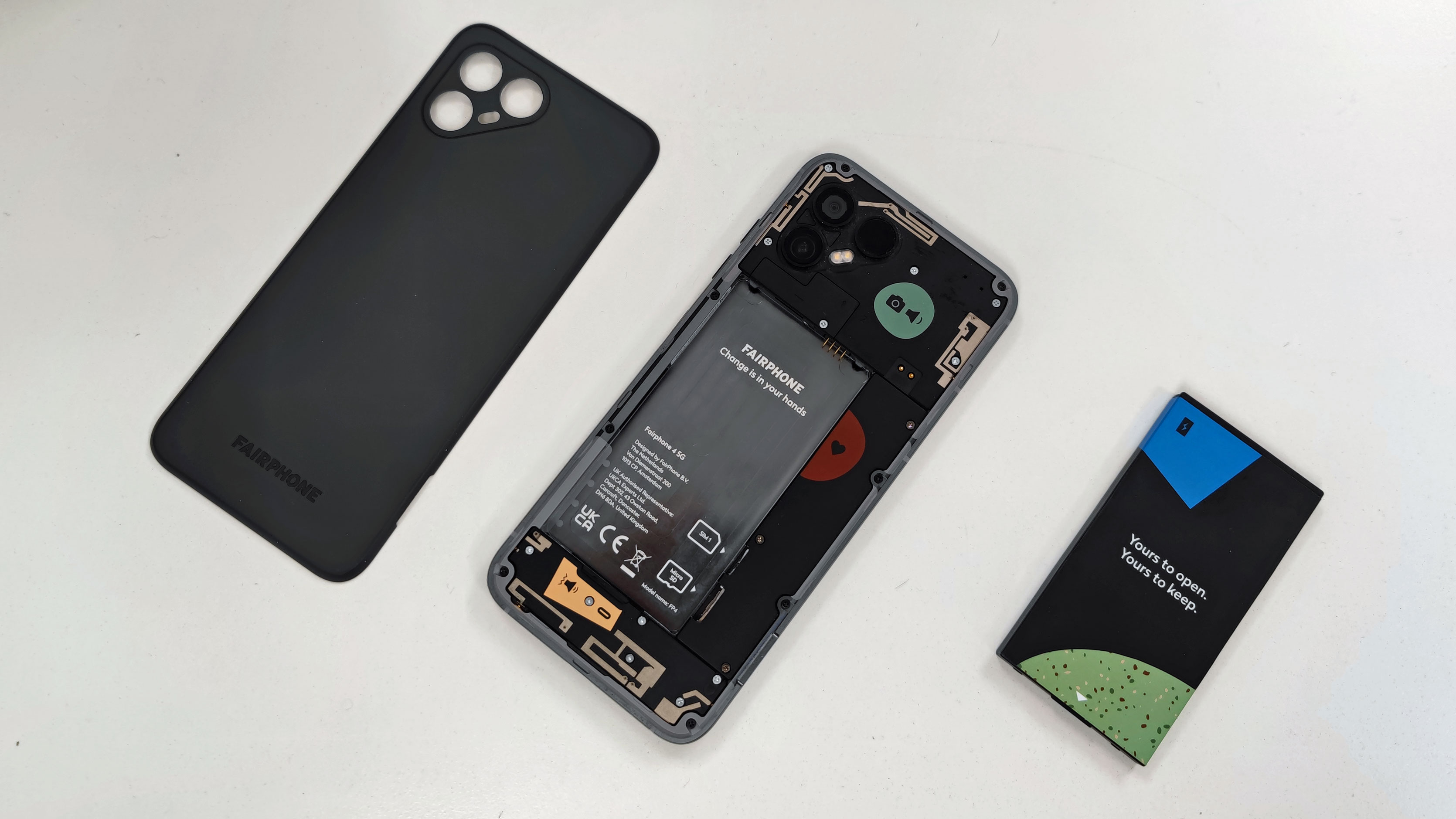
The replaceable nature of most of the Fairphone 4’s parts is one of its great eco-friendly perks, as if the device breaks in some way, you can easily repair it yourself without needing to send it off somewhere or buy a new device.
You can remove the rear and battery just by hand - you used to be able to do this for most phones in years gone by, but most power packs are non-replaceable now. The Fairphone 4 truly is a blast from the past in many ways, including this.
Display
The Fairphone 4 packs a 6.3-inch screen, broken up by a ‘teardrop’ notch at the top which houses the front-facing camera. With the vast majority of phones at all price points opting for ‘punch-hole’ front-facing cameras now, in which the camera is housed in a little cut-out in the screen, a notch feels like a blast from the past.
The resolution here is 1080 x 2340, which is basically the same resolution as all but a few budget or top-end smartphones. It’s an LCD display, so colors aren’t as vibrant and contrast isn’t as pronounced as on an OLED screen, but it is easier to see in daylight than some OLED panels.
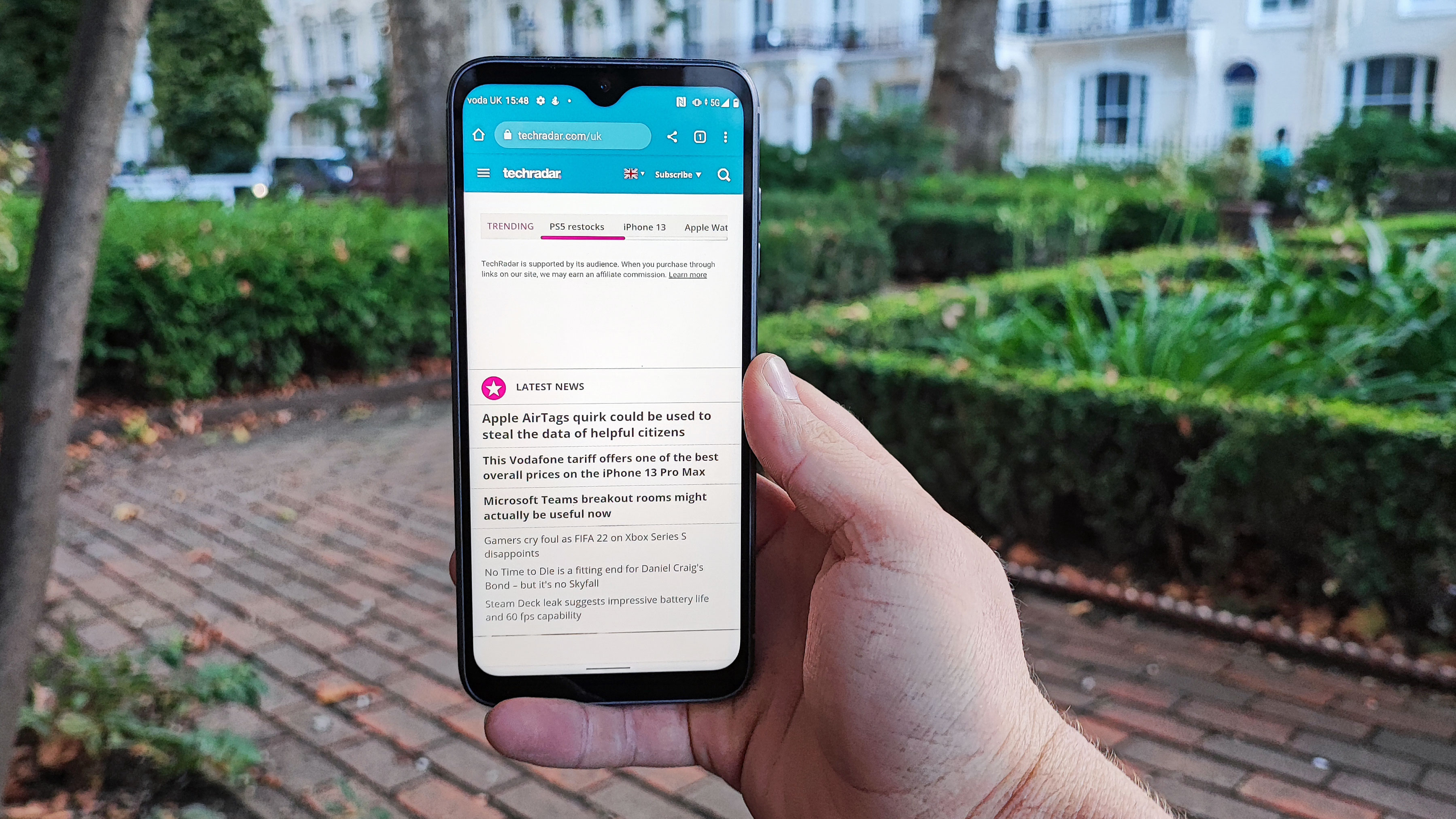
Some may find the 60Hz refresh rate on the phone a little slow - this means the image updates 60 times per second, but lots of phones at this price point offer 90Hz or even 120Hz, which makes motion appear smoother.
You wouldn’t buy the Fairphone 4 for its screen quality - it’s the phone’s most journeyman spec - but we weren’t disappointed by it either.
Cameras
The weak link of the Fairphone 4 is its camera array, as pictures weren’t fantastic, and in particular, we had some selfie issues.
The Fairphone 4 has a 48MP main camera, just like the 3 Plus, although it’s a slightly better snapper with an f/1.6 aperture and optical image stabilization. While the 3 Plus only had one camera, the new phone has an extra camera in the form of a 48MP f/2.2 ultra-wide snapper, and also a 3D Time-of-Flight sensor.
Pictures taken on the Fairphone 4 aren’t bad, but they have a problem - there’s very little in the way of scene optimization here. While most other brands design software to spruce up a photo when it's taken, often boosting the saturation and brightness depending on the scene, Fairphone doesn’t seem to have much of this.
We can’t say there’s ‘no’ AI post-processing, because you can actually choose a scene category here as you can on many other phones. It just rarely seemed to do anything.
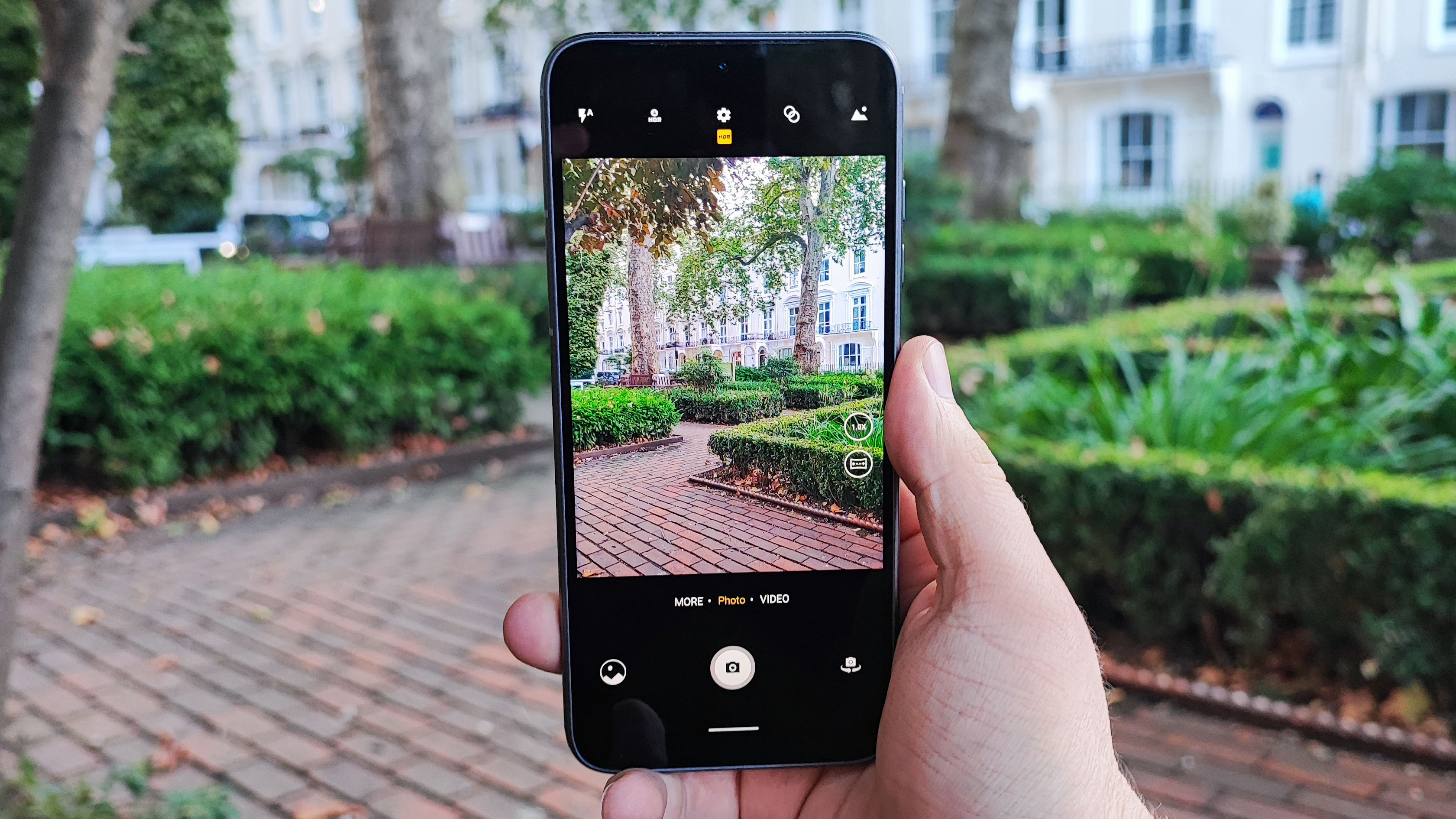
So pictures taken looked a little desaturated and dull in most settings, though we did get some good shots in good light conditions. Photos were sufficiently sharp though, and by pulling the snap into an image editing app, we could turn them into (near) masterpieces.
The average phone user likely doesn’t expect to have to edit snaps though, not when most devices tune pictures automatically, so if you want great photos right out of the gate, this might not be the best device for you.
We had one other camera issue too, and that was with the 25MP f/2.2 selfie camera. Many selfies we took were strangely dark, with an odd green glow, but the most head-scratching thing is that this effect wasn’t present for every single selfie. Our best guess is that some errant scene optimization is trying to do something here and failing, but it’s hard to tell. You’ll be able to see some images accompanying the review which illustrate this.
Video recording here goes up to 4K at 30fps or 1080p at 60fps, and there’s a select range of other modes like high-res (instead of 4-in-1 pixel binning like in the default mode, where the camera treats the 48MP snapper like a 12MP one but with giant pixels), slow-motion video recording, time lapses, night mode and panorama shooting.
Camera samples





Specs and performance
The ‘brain’ of the Fairphone 4 is the Snapdragon 750G chipset - that’s a mid-range processor that we also saw in the Samsung Galaxy A52 5G and TCL 20 Pro 5G. It’s not the most powerful chipset in the world, but it’s enough for most people.
We put the phone through the Geekbench 5 benchmark test, and it returned a multi-core score of 1798, which puts it in league with the Poco X3 NFC and Redmi Note 9T which got 1699 and 1799 respectively. That’s about 200 points above the Galaxy A52 5G but 100 below the TCL phone.
That’s a middling amount of power, which will be enough for ‘average’ phone use like social media, online banking and low-end games, but it won’t quite cut it for video editing or high-end gaming. We tried a few top-end games and the experience could be a little stuttery at times, though mid-range titles were fine.
This chipset is paired with 6GB or 8GB of RAM and 128GB or 256GB of storage depending on which you opt for - as we’ve already mentioned there’s expandable memory for up to 2TB if you buy a microSD card, so unless you want the extra RAM, the smaller option may be enough.

This is Fairphone’s first 5G phone, so you’ll be able to connect to next-gen data networks if and when they roll out in your region. This makes internet much faster, which is useful for downloading files and conducting video calls, though if your area doesn’t have 5G you’ll be able to use 4G just fine too.
The Fairphone 4’s speaker was totally fit for purpose, with calls and videos sounding fine, and it didn’t sound terrible for playing music either (as some mid-rangers can put out tinny noises), though obviously an actual dedicated speaker or headphones will be much better.
Software
The Fairphone 4 runs stock Android 11, as designed by Google - the only thing the company has added is a Fairphone app which comes pre-installed, and tells you about the brand’s mission.
Otherwise, this is the same Android operating system as you’d find on your Pixel, Motorola or Nokia mobile, with a clean appearance, round icons and Google’s pre-installed apps like Pay, Maps and Keep.

If you like your phone lasting a long time, this is a good choice for you, as Fairphone has pledged to keep updating the phone with software and security patches until at least 2025, and will definitely keep the Android version up to date until Android 13, and possibly further.
We found the user interface fairly slick to navigate, though there were times, particularly when we were downloading big apps, that it stuttered a little.
Battery life
Despite having a 3,905mAh battery - that’s pretty small compared to lots of rivals, with their 4,500mAh to 5,000mAh power packs - the Fairphone 4 had very impressive battery life.
The phone easily lasted a day after being charged, and it often sailed far into the second day of use too. That was the case even when we played lots of games, streamed hours of music and spent too long scrolling through social media; heavy use still ensured the phone lasted a full day.
This must be a case of software optimizations done by Fairphone. Charging speeds are a little less impressive at 20W though, and the phone took well over an hour to power up to full.
Fast charging can degrade a battery, so slower charging makes sense given longevity is one of the Fairphone 4’s key points. However the battery is easily replaceable by ordering a new one online and replacing it by hand, so we would have liked to see slightly quicker powering.
Should I buy the Fairphone 4?

Buy it if...
You care about the environment
From its recycled body and energy efficiency to its conflict-free components and fair production environment, the Fairphone 4 is a great device for people who care about the environment.
You treat your phones rough
If you’re prone to dropping your phone, or bumping it into things or just dropping things onto it, you’ll find the Fairphone 4’s plastic rear and metal frame can take a beating.
You need a long-lasting phone
The Fairphone 4’s build and software promises ensure the phone will keep working for years to come, and the fact you can replace parts easily just ensures you won’t be throwing it away in a year or two if it breaks.
Don't buy it if...
You want fantastic camera performance
There are a fair few phones at the Fairphone 4’s price that lap it in the camera department, with higher-res sensors and better image optimization, so if you just need a portable camera it’s perhaps not the best choice.
You need to use your wired headphones
You can’t just plug your wired headphones into the Fairphone 4 like you could its predecessors, so if you need to use cans with cables, you’ll either need to buy an adapter or just pick up a different device.
- First reviewed October 2021

Tom Bedford joined TechRadar in early 2019 as a staff writer, and left the team as deputy phones editor in late 2022 to work for entertainment site (and TR sister-site) What To Watch. He continues to contribute on a freelance basis for several sections including phones, audio and fitness.
